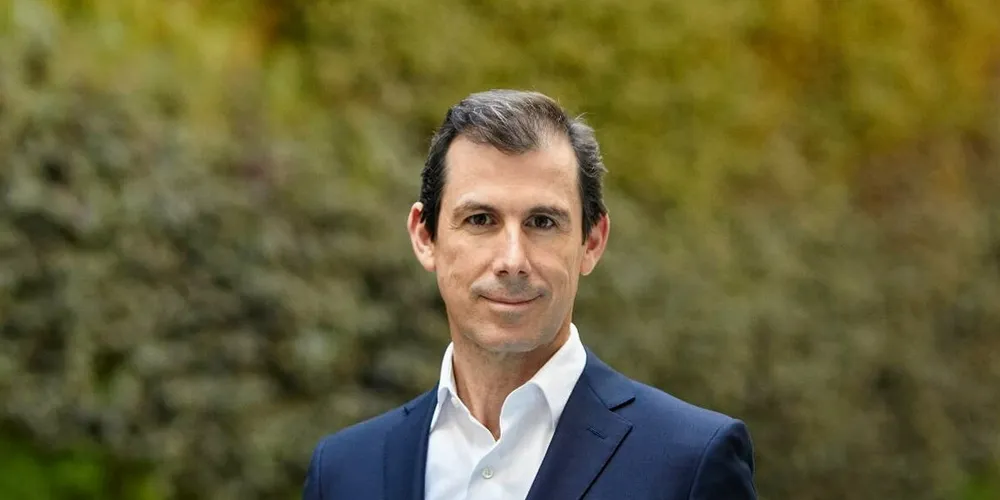As Big Tech bids up prices, green power is turning into a 'seller's market': EDPR CEO
The Madrid-based renewables giant is determined to make the most of surging demand for PPAs

EDPR has raised the bar for the return on its future investments in response to a changing outlook that includes the challenges of high capital costs, but also heralds a growing boom in corporate PPA deals from a Big Tech sector with an insatiable appetite for clean energy.
From a results perspective, EDPR delivered a steady quarter with operating (Ebitda) earnings of €458m ($494m) and a slightly improved net profit of €68m.
A 3% fall in the average selling price, mainly caused by European markets, was largely offset by a gradual ramp up recently installed capacity, with generation reaching 9.9TWh in the quarter.
EDPR’s earnings statement looked beyond the current quarter, however.
While highlighting the merits of its own diversified energy portfolio, the company's revised business and financial outlook looked ahead to what CEO Miguel Stilwell d’Andrade called a “very strong and increasing demand worldwide for renewable energy”.
He pointed to new market drivers including artificial intelligence and green hydrogen, but said it was demand from big tech companies that is changing the game and creating a "sellers market" for PPAs.
D'Andrade stressed that support for growth from government and regulatory frameworks is expected to remain strong for the time being. “This was true two years ago, it is true now and we believe it will be there in another two years,” he told an earnings call.
In Europe, EDPR expects regulated auctions to continue to deliver the bulk of renewable energy growth in 2024.
D'Andrade also highlighted the long-term growth potential in the US, where the newly established transferability of tax credits is expected to unlock an additional $10-$30bn in financing per year, according to d’Andrade.
“Together with transferability, the tax credit financing supply will more than double over the next 10 years,” he said.
Big Tech
But the Iberian renewables giant reckons huge demand from corporate PPAs is changing the outlook, driven mainly by sustainable corporate targets.
This demand is especially strong in the US, where it is driven substantially by Big Tech looking to power data centres and AI, but demand in Europe has also been stimulated further by a EU Code of Conduct for data centres, D’Andrade said.
He also cited commitments to use sustainable energy made by companies under the RE100 charter which EDPR reckons implies demand for another 30GW by 2030.
“All of this implies that the demand is there and offers a basis for profitable growth.” d'Andrade added.
In its updated outlook, EDPR revised its own capacity additions in the 2024-26 period to 10GW, about 70% of which is already secured, mainly in the low risk markets of North America and Europe.
Of the 7GW of secured capacity shown by EDPR, 71% came under the corporate PPA category, and 70% of those within this category were Big Tech companies mainly US and Europe.
Seller's market
D'Andrade told analysts of growing competition for clean energy adding, anecdotally, that one unnamed EDPR project has became the focus of a contest for green electrons between two prospective customers, with prices “coming close to $70 per MWh.
“So its becoming a seller's market. This is good for the pricing of PPAs,” d'Andrade stated.
"It's not us bidding to sell the energy to third-parties, it's actually switching around... certainly over the last couple of weeks and months, we've been seeing that."
D’Andrade said the company would look to keep diversifying its own offtake arrangements and already had “good visibility” on close to 1GW of the unsecured capacity now the subject of PPA negotiations, with Big Tech companies and utilities among the potential clients.
The increasing competition for green electrons is still taking place amid high interest rates and lower European electricity prices, however.
The company announced that is has also raised its margins for upcoming investment decisions, targeting a spread of at least 250 basis points for internal rate of return above the weighted cost of capital, rather than the previous hurdle of 200 basis points.
In its most recently approved investments, EDPR has waved through projects with a spread of around 220 basis points, amounting to an internal rate of return of 8-9%.
In addition to raising the bar for the rate of return on investments, EDPR cut €3bn from its 2024-26 investment targets and lowered its ambitions for compound annual growth rates in a bid to improve efficiency.
The company has targeted gross investments of €12bn in in renewables for 2024-26, partly funded by up to €5bn in asset rotation proceeds and another €3bn from US tax equity investments.
"If you prioritise returns over volume, you can go for the best spread, based on your megawatt choices," d'Andrade said.
"The world's capacity to generate renewable electricity is expanding faster than at any other time... and the next few years will see faster growth yet. EDPR is well positioned to capture this steady growth globally," he concluded
EDPR's current installed capacity of 16.5GW is mainly divided between mature markets in North America (50%) and Europe (36%), with another 8% in Brazil. More than 91% of the company's renewables generation comes from wind.
In its analysis, EDPR based its average selling price for 2024 on an assumption of €53-54/MWh.
(Copyright)